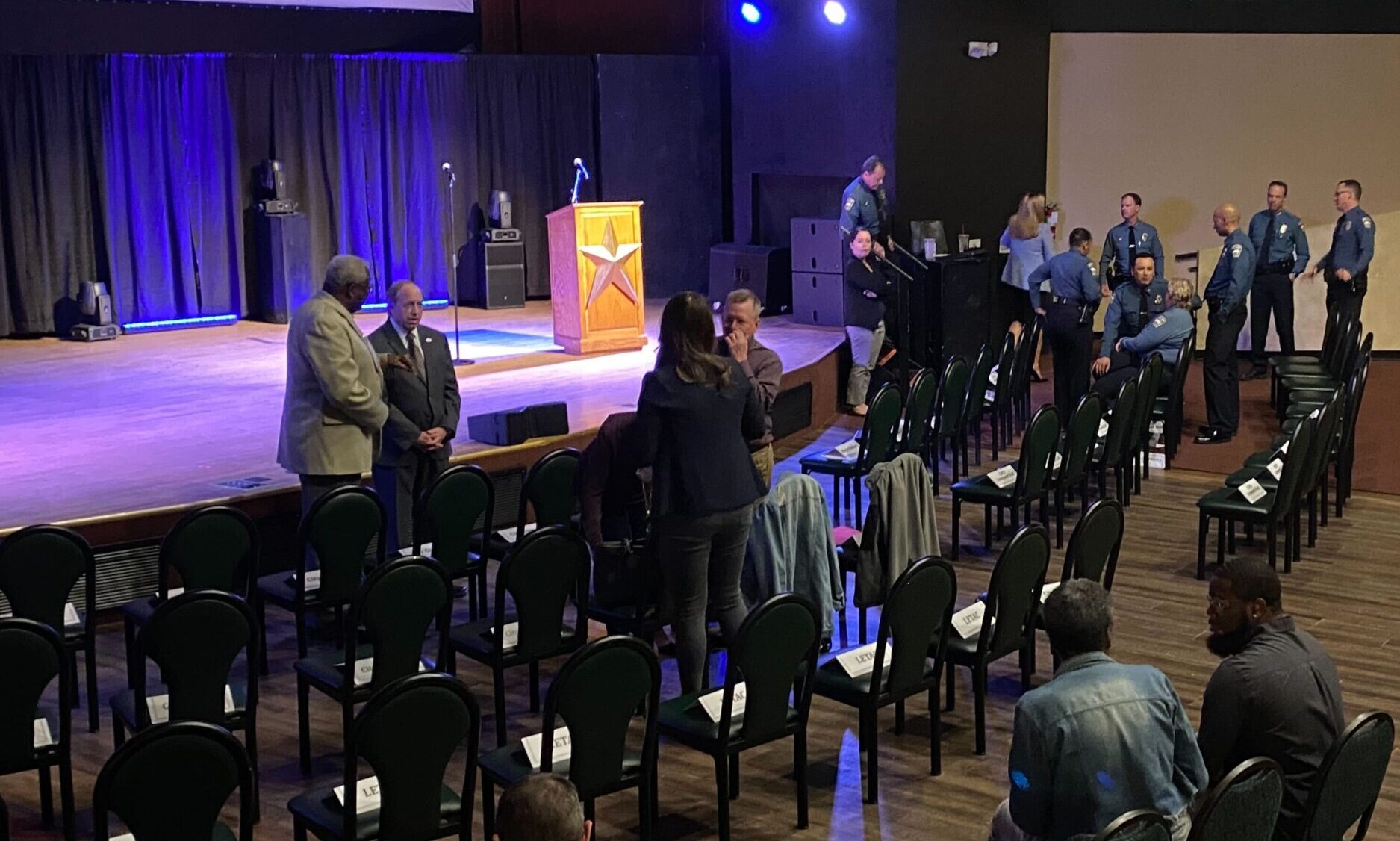
The Colorado Springs Police Department has "very minor or no racial/ethnic disparities in use of force for both Black and Hispanic individuals compared to (w)hite individuals." That's the conclusion of an audit on how CSPD uses force, released Tuesday.
Researchers also said CSPD is a leader in its field when it comes to training models surrounding the use of force and prohibiting the use of chokeholds.
CSPD hired outside consulting group Transparency Matters more than a year ago to look into the department's use of force, including demographic data and potential disparities. Results were expected last fall, but the audit was delayed after the police department asked for more input from officers.
The report uses data provided by the CSPD between 2017 and 2020.
Robin Engel, lead researcher for Transparency Matters, emphasized that a disparity of any size between groups does not equate to bias within the department, as bias in itself cannot be measured.
"You can have racial and ethnic disparities without having bias," Engle said. "Bias indicates that the reason for those differences is because of, in this case, an officer's prejudice or a favoring over one thing or another."
She says her team can measure racial and ethnic disparities, but cannot measure officer bias.
"...and the reason for that is because I cannot get into an officer's head."
The study did not compare CSPD's use of force data to similar cities. Researchers said it's not an equal comparison to do so.
However, they did compare best practices and standards with other cities with overall positive results. The only recommendation with regards to best practices was to release an annual report on use of force, which CSPD said it plans to do.
A key area of focus in the report was data surrounding the pointing of a firearm. Transparency Matters studied 140 randomly selected reports involving a firearm being pointed at an individual. Of those reports, researchers deemed 77 percent justified. The remaining 13 percent were marked by the agency as "inappropriate" for reasons ranging from the failure to use de-escalation techniques to a lack of cause for the officer to use a lethal weapon.
All of the reports were approved by supervisors, showing further oversight is needed, researchers said.
Transparency Matters made the following recommendations for CSPD, as quoted from the report:
- Enhance agency culture that emphasizes, reinforces, and rewards the use of de-escalation tactics and skills by officers through systematic documentation, continual reinforcement of policies and training, and development of accountability and oversight mechanisms.
- Continue the processes established for the CSPD’s Use of Force Committee for comprehensive and routine reviews and updates to policy and communicate this work internally and externally.
- Review and update the documentation, policy, training, and supervisory oversight related to the pointing of firearms at a person.
- Conduct an independent audit of CSPD use of force training to ensure content, quality, and duration of use of force training is meeting industry best practices.
- Enhance transparency through the timely release of information to the community to improve public confidence and trust.
- Continue to enhance supervision, accountability & oversight related to use of force.
- Review and make appropriate changes to use of force data collection to meet best practices.
- Work internally and externally to continually reduce racial/ethnic disparities in use of force. Continue to work internally and externally to continually monitor and reduce racial/ethnic disparities in use of force.
Newly appointed Colorado Springs Police Chief Adrian Vasquez said the report is an opportunity to improve and that it's a good step in building trust with the community.
"We've got some work to do, but I think a lot of it comes down to training," Vasquez said. He noted officer feedback in the report that found an increased desire in training surrounding use of force.
Officers with the CSPD also expressed a desire for increased transparency, mirroring a big ask from the community. Researchers said that is unusual, adding that Colorado Springs is the only city they've worked with where officers have specifically asked for more transparency from the department.
"[Transparency Matters] gave the recommendations, it's our charge now really to move forward and evaluate some of the deeper reasons why," Vasquez said.
Members of the city's Law Enforcement and Transparency and Accountability Commission (LETAC) were on hand to hear the results of the report.
JJ Frazier, chair of LETAC, said she plans to go over the information in more detail before coming to any conclusions, but she hopes LETAC can offer feedback and recommendations to the city council based on the findings.
LETAC formed in September 2020 after Colorado Springs City Council approved the group in July of that same year. The group is aimed at improving community relationships with the police department and offering policy recommendations.
Meantime, earlier in the day, Colorado Springs Police Chief Adrian Vasquez was sworn in as the new head of the department, after a near-unanimous vote of approval from the council. He had been serving as interim chief since March. Vasquez has served with CSPD for 27 years and was in the Air Force prior to joining the department.
In his remarks to council before the vote, Mayor John Suthers said Vasquez is the right person to lead the department as the city continues to face rapid growth. Councilor Bill Murray was the lone no vote, saying he was disappointed with the process and the city deserves to see real change.
Quick facts
The use of force audit for the Colorado Springs Police Department, which cost the city $169,000, reviewed information between January 2017 and December 2020.
- The average number of use of force incidents per officer was 4.9
- 5,933 individuals had force used against them in a single encounter. Of those 64.3% had a firearm pointed at them.
- Resistance and/or non-compliance was one of the strongest predictors of use of force
- The most common type of force used was "weaponless" followed by a taser and chemical spray
- The number of overall arrests went down, but use of force incidents went up (researchers say the pandemic could have been a factor in fewer interactions with individuals least likely to show resistance)
- Black residents are 1.3 times more likely to have a firearm pointed at them by the CSPD, relative to white arrestees and 1.3 times more likely to have use of force against them*
- Hispanic residents are 1.7 times more likely to have a firearm pointed at them by CSPD, relative to white arrestees, and 1.2 times more likely to have use of force against them
- Male arrestees are 1.8 times more likely to be involved in use of force
- Younger people are slightly more likely to have force used against them during an arrest
- Arrests in neighborhoods with more violent crimes are slightly more likely to result in use of force
- 70% of arrests involving physical force or weapons involved people who were perceived as impaired
- Non-white community respondents were significantly less likely than white respondencts to provide positive responses in nearly all survey questions
*Transparency Matters says anything over 1.5 is concerning; 2.0 or higher is problematic; results under 1 signal reverse issues of disparity.








